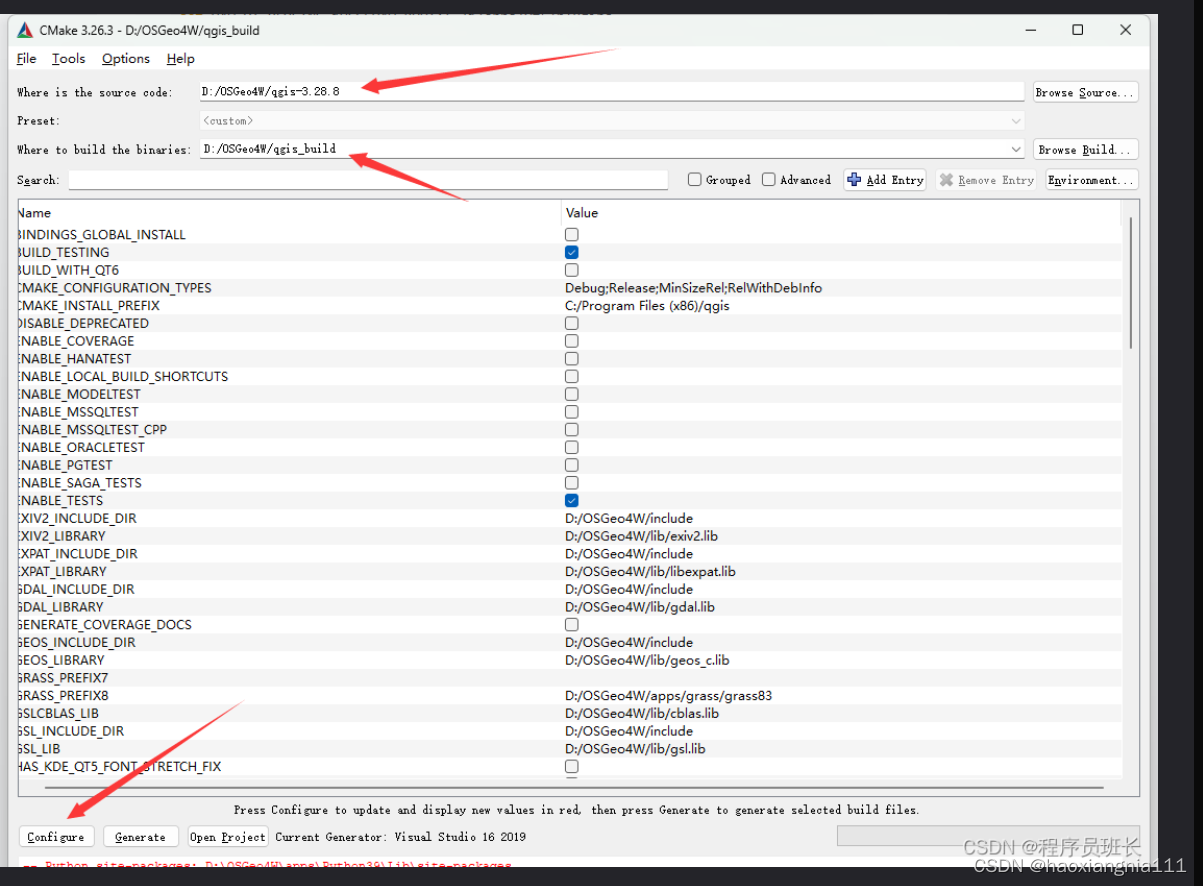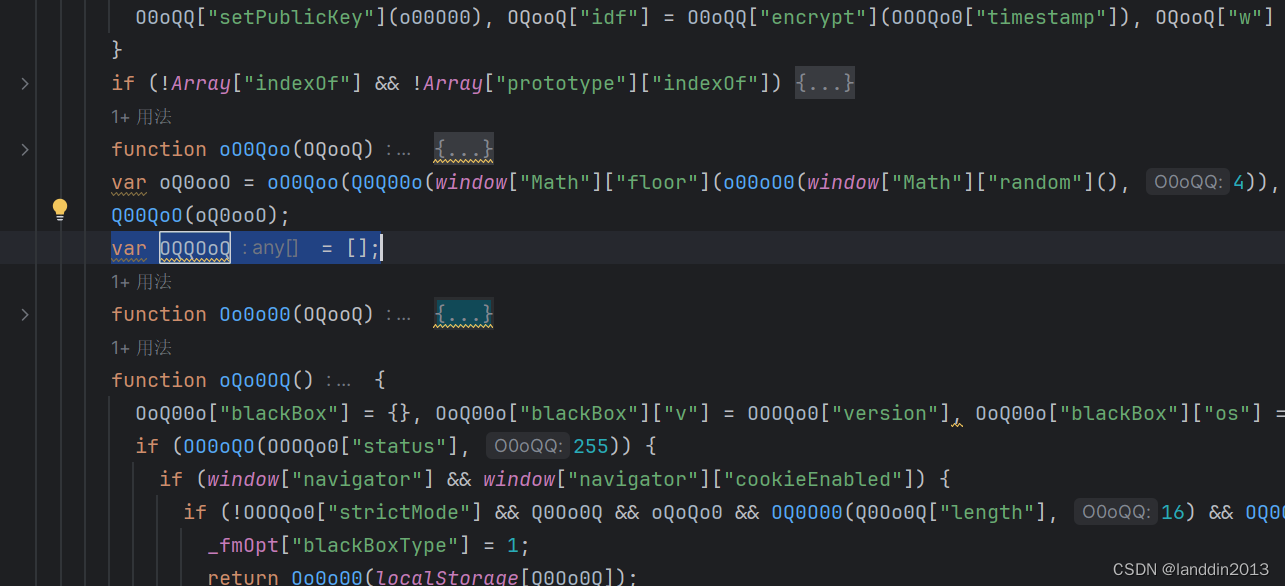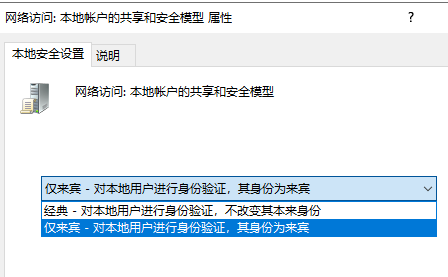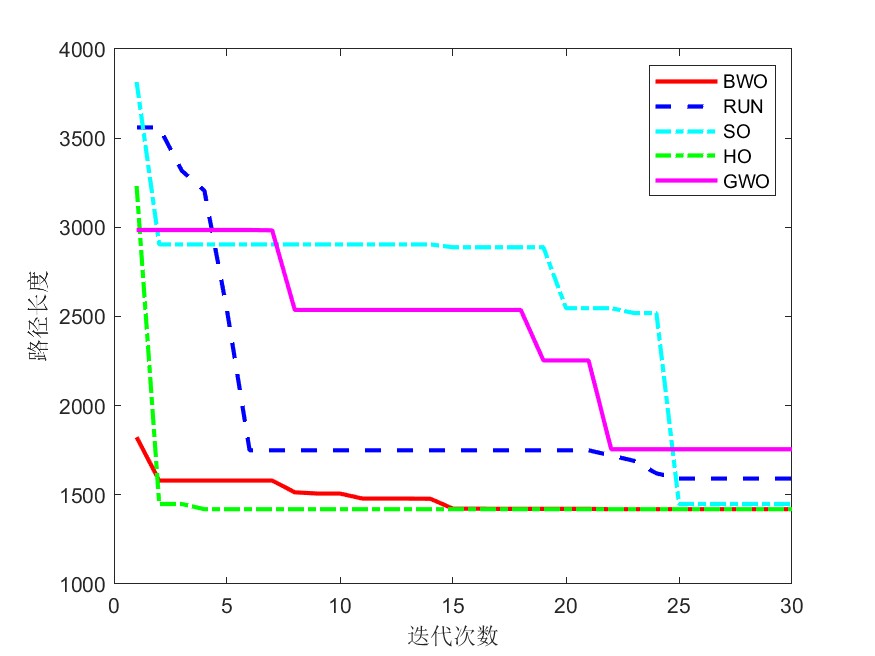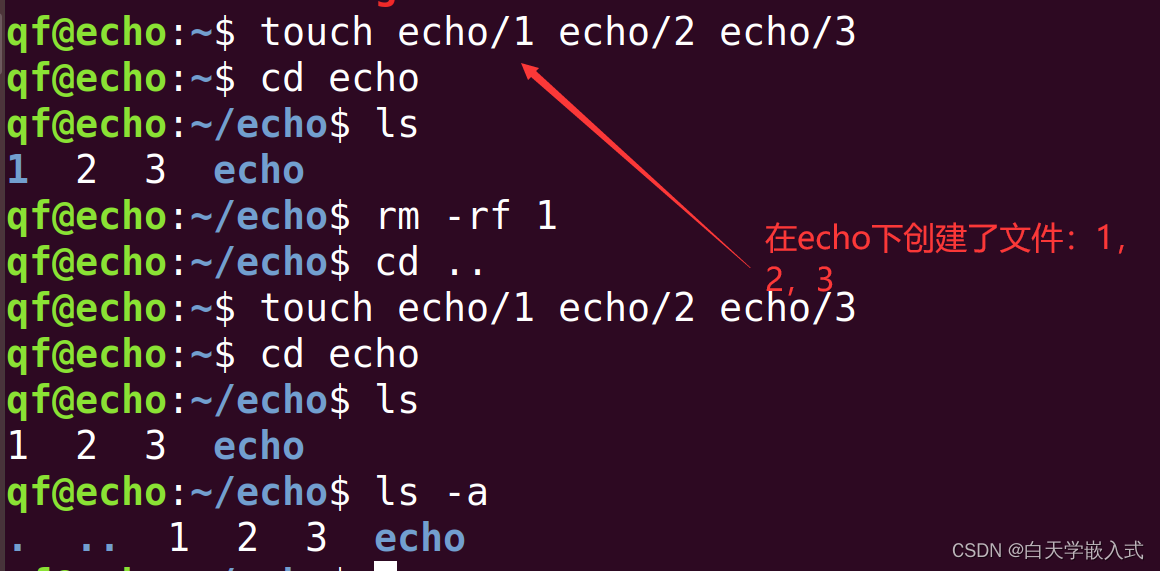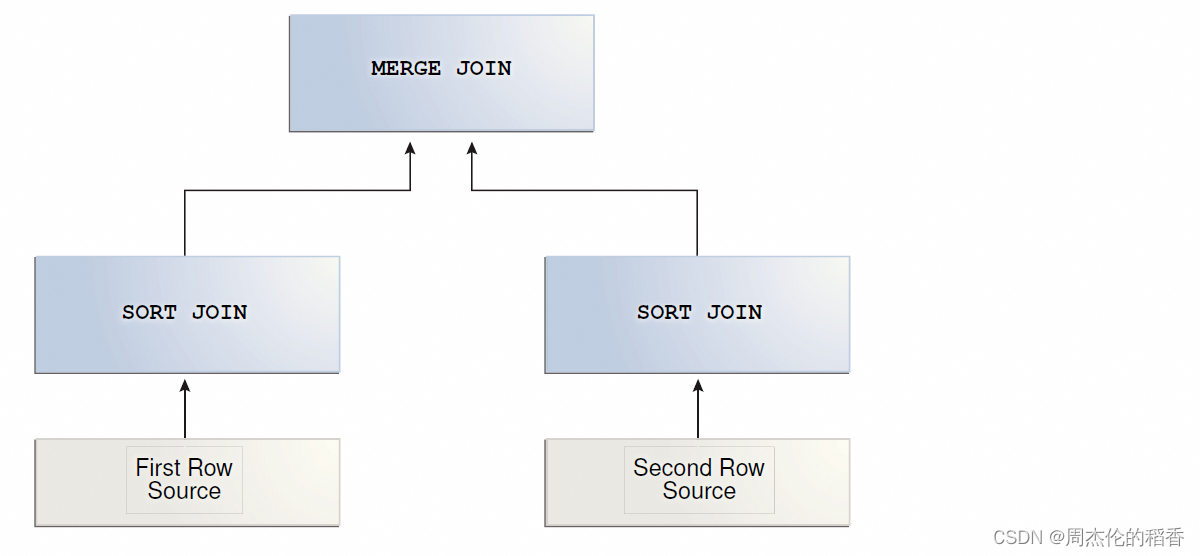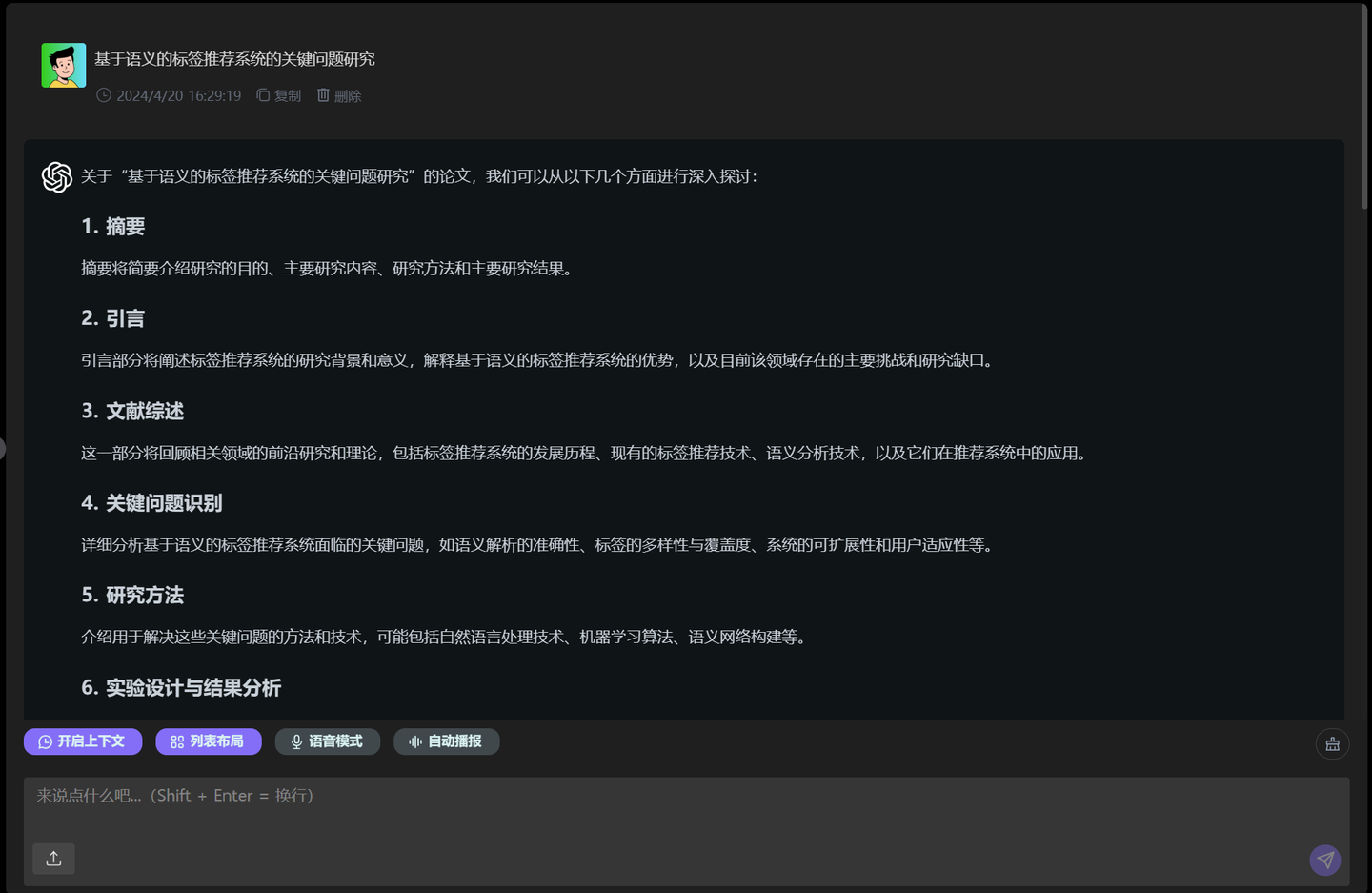主知识点六:having
聚合前的筛选用where,聚合后的筛选用having
Having和where的区别是:运行顺序和对象不用
Having是在group by聚合后的基础上进行筛选。
● 【例题27*】(运行原理)查询总人口数至少为3亿的大洲和其平均gdp,其中只有gdp高于200亿且人口数大于6000万或者gdp低于80亿且首都中含有三个a的国家的计入计算,最后按国家数从大到小排序,只显示第一行。
分析:
(1)查询的是大洲和其平均gdp
(2)where限制是总人口数至少为3亿
(3)只有gdp高于200亿且人口数大于6000万
或者
gdp低于80亿且首都中含有三个a的国家的计入计算
(4)最后按国家数从大到小排序,order by … desc
(5)只显示第一行 limit 1
我的代码:
select continent,avg(gdp)
from world
where gdp>20000000000 and population>60000000
or gdp <8000000000 and name like '%a%a%a' //首都名,不是国家名
group by continent
having sum(population) >=300000000 //总人数,sum不要忘了
order by count(name) desc
limit 1
师兄代码:
select continent,avg(gdp) 平均gdp
from world
where (gdp > 20000000000
and population > 60000000)
or (gdp <8000000000
and capital like '%a%a%a%')
group by continent
having sum(population) >= 300000000
order by count(name) desc
limit 1
总结:where在group by前,having在group by后
● 【SQL运行原理】from--where--group by--having--order by--limit—select
● 【题目】查询人均gdp大于3000的大洲及其人口数,仅gdp在200亿和300亿之间的国家计入计算。
分析:
(1)查询大洲及其人口数
(2)限制是人均gdp大于3000——having
(3)仅gdp在200亿和300亿之间的国家计入计算(分组)。——where
我的代码:
select continent,population // 大洲的人口数=洲内各国人口数之和,sum(population)
from world
where gdp between 20000000000 and 30000000000
group by continent
having (gdp/population)>3000 //不对,导致结果错误,是洲内!不是国,所以要求和
正确代码:
select continent,sum(population) 人口数,sum(gdp)/sum(population) 人均GDP
from world
where gdp between 20000000000 and 30000000000
group by continent
having sum(gdp)/sum(population) > 3000 //洲人均GDP
运行结果:
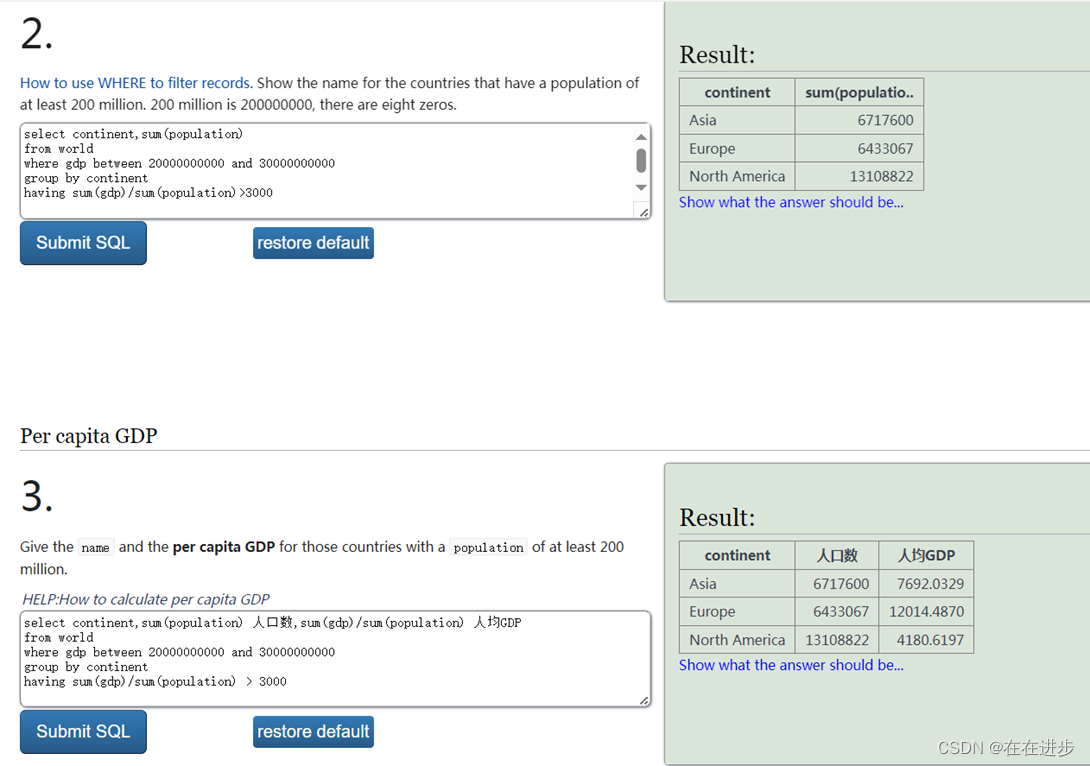
主知识点七:常见函数
● 【数学函数】
round(x,y)——四舍五入函数
round函数对x值进行四舍五入,精确到小数点后y位
y为负值时,保留小数点左边相应的位数为0,不进行四舍五入
例如:round(3.15,1)返回3.2,round(14.15,-1)返回10
● 【字符串函数】
concat(s1,s2,...)——连接字符串函数
concat函数返回连接参数s1、s2等产生的字符串
任一参数为null时,则返回null
● 例如:concat('My',' ','SQL')返回My SQL,concat('My',null,'SQL')返回null
replace(s,s1,s2)——替换函数
replace函数使用字符串s2代替s中所有的s1
● 例如:replace('MySQLMySQL','SQL','sql')返回MysqlMysql
left(s,n)、right(s,n)&substring(s,n,len)——截取字符串一部分的函数
left函数返回字符串s最左边n个字符
right函数返回字符串s最右边n个字符
substring函数返回字符串s从第n个字符起取长度为len的子字符串,n也可以为负值,则从倒数第n个字符起取长度为len的子字符串,没有len值则取从第n个字符起到最后一位
● 例如:left('abcdefg',3)返回abc,right('abcdefg',3)返回efg,substring('abcdefg',2,3)返回bcd,substring('abcdefg',-2,3)返回fg,substring('abcdefg',2)返回bcdefg
● 【数据类型转换函数】
cast(x as type)——转换数据类型的函数
cast函数将一个类型的x值转换为另一个类型的值
type参数可以填写char(n)、date、time、datetime、decimal等转换为对应的数据类型
● 【日期时间函数】
year(date)、month(date)&day(date)——获取年月日的函数
date可以是年月日组成的日期,也可以是年月日时分秒组成的日期时间
year(date)返回日期格式中的年份
month(date)返回日期格式中的月份
day(date)返回年日期格式中的日份
● 例如:year('2021-08-03')返回2021,month('2021-08-03')返回8,day('2021-08-03')返回3
date_add(date,interval expr type)&date_sub(date,interval expr type)——对指定起始时间进行加减操作
date用来指定起始时间
date可以是年月日组成的日期,也可以是年月日时分秒组成的日期时间
expr用来指定从起始时间添加或减去的时间间隔
type指示expr被解释的方式,type可以可以是以下值
主要使用红框中的值
date_add函数对起始时间进行加操作,date_sub函数对起始时间进行减操作
● 例如:date_add('2021-08-03 23:59:59',interval 1 second)返回2021-08-04 24:00:00,date_sub('2021-08-03 23:59:59',interval 2 month)返回2021-06-03 23:59:59
datediff(date1,date2)——计算两个日期之间间隔的天数
datediff函数由date1-date2计算出间隔的时间,只有date的日期部分参与计算,时间不参与
● 例如:datediff('2021-06-08','2021-06-01')返回7,datediff('2021-06-08 23:59:59','2021-06-01 21:00:00')返回7,datediff('2021-06-01','2021-06-08')返回-7
date_format(date,format)——将日期和时间格式化
date_format函数根据format指定的格式显示date值
可以换使用的格式有
● 例如:date_format('2018-06-01 16:23:12','%b %d %Y %h:%i %p')返回Jun 01 2018 04:23 PM,date_format('2018-06-01 16:23:12','%Y/%d/%m')返回2018/01/06
● 【条件判断函数】——根据满足不同条件,执行相应流程
if(expr,v1,v2)
如果表达式expr是true返回值v1,否则返回v2
例如:if(1<2,'Y','N')返回Y,if(1>2,'Y','N')返回N
case when
case expr when v1 then r1 [when v2 then r2] ...[else rn] end
● 例如:case 2 when 1 then 'one' when 2 then 'two' else 'more' end 返回two
case后面的值为2,与第二条分支语句when后面的值相等相等,因此返回two
case when v1 then r1 [when v2 then r2]...[else rn] end
● 例如:case when 1<0 then 'T' else 'F' end返回F
● 1<0的结果为false,因此函数返回值为else后面的F

